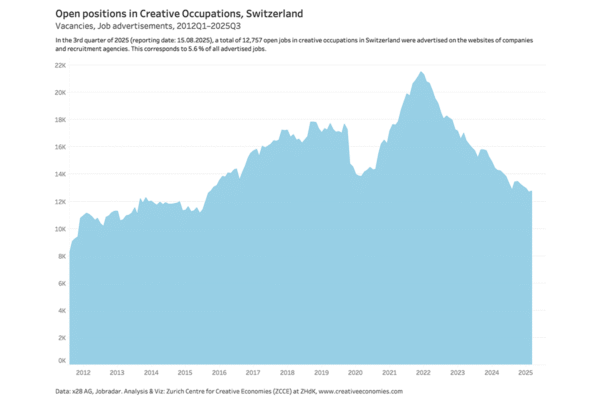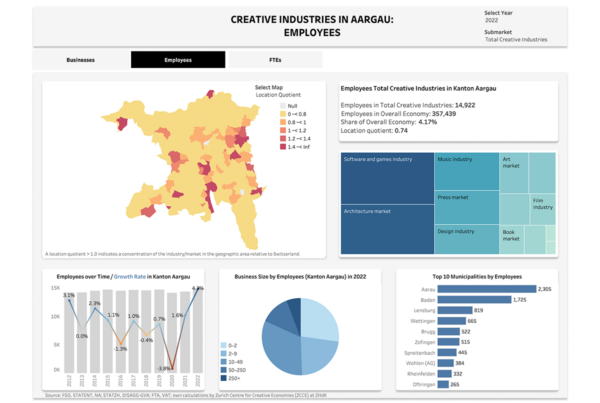The treemap below shows how Switzerland’s approx. 400’000 creative jobs are spread across different industries. The size of each box captures the number of creative occupations within an industry (NOGA4). The colour of each box shows the industry section (NOGA1).
-The Professional, scientific & technical activities sector contains the industry that has the largest number of jobs in creative occupations: ‘Architectural activities’.
-The Information & communication sector contains the industry with the highest percentage of jobs in creative occupations (‘creative intensity’): ‘Motion pict., video a. tv. produc. act.’.
-Approximately half of all creative jobs are found outside the ‘Creative Industries’. Several of these industries each contain at least 5’000 creative jobs.
Based on the classification for creative occupations and industries according to the UK’s DCMS and innovation foundation Nesta, we estimate the size of the Swiss creative economy employment and its three main components (specialist, non-specialist, and embedded employment) using the Swiss Labour Force Survey (SLFS).
Creative economy employment is given by the sum of creative industries employment and all creative jobs in other industries (embedded jobs). The creative economy thus consists of three types of employees:
1. Non–specialists (support): employed persons working in a creative industry, but who are not themselves employed in a creative occupation, for instance, a bookkeeper at a publishing company.
2. Specialists: persons working in creative occupations in creative industries, for instance, a dancer in an ensemble or a journalist writing for a daily newspaper.
3. Embedded: persons working in creative occupations outside the creative industries, for instance, a game designer working in financial services.
Further information in our Creative Economies Reports and in the Research Notes.






